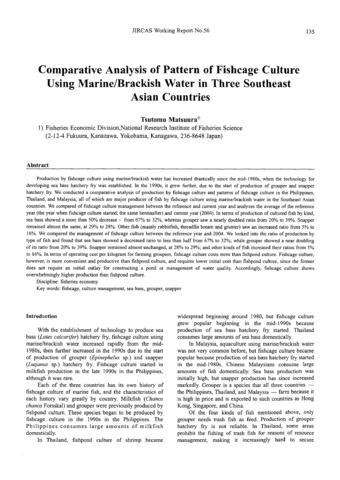Net cage culture of tilapia in dams and small farm reservoirs
Share
Abstract
The manual describes the net cage of tilapia in dams and small farm reservoirs, which has been found to be a low-cost yet high-income earning farm activity and offers an excellent option as an alternative livelihood for poor inland fisherfolks. The following aspects are covered: 1) Characteristics of a suitable site; 2) Design of the net cages - the floating cage, the stationary/fixed cage; 3) Stocking the net cages - source of juveniles, stocking rate, stocking time, acclimation; 4) Management of the cages - feeds and feeding, monitoring activities; 5) Harvesting - partial harvest, total harvest; and, 6) Profitability analysis.
Description
A 14-page manual that details net cage design and cage management after tilapia has been stocked. Some data on operating costs included.
Suggested Citation
Baliao, D. D., de los Santos, M. A., Franco, N. M., & Jamon, N. R. S. (2000). Net cage culture of tilapia in dams and small farm reservoirs. Tigbauan, Iloilo, Philippines: SEAFDEC Aquaculture Department.
Subject
Collections
Related items
Showing items related by title, author, creator and subject.
-
The culture of tilapia
Aldon, Eva T. (Aquaculture Department, Southeast Asian Fisheries Development Center, 1998) -
Recent developments in aquaculture in Japan
Fukusho, K. (Aquaculture Department, Southeast Asian Fisheries Development Center, 1995)Aquaculture production in Japan in 1993 was 1,351,000 tons, 15.6% of the total fisheries production. About 93.6% came from mariculture and 6.4% from freshwater aquaculture. The per cent contribution of aquaculture to total ... -
Comparative analysis of pattern of fishcage culture using marine/brackish water in three Southeast Asian countries
Matsuura, Tsutomu (Japan International Research Center for Agricultural Sciences, 2007)Production by fishcage culture using marine/brackish water has increased drastically since the mid-1980s, when the technology for developing sea bass hatchery fry was established. In the 1990s, it grew further, due to the ...





